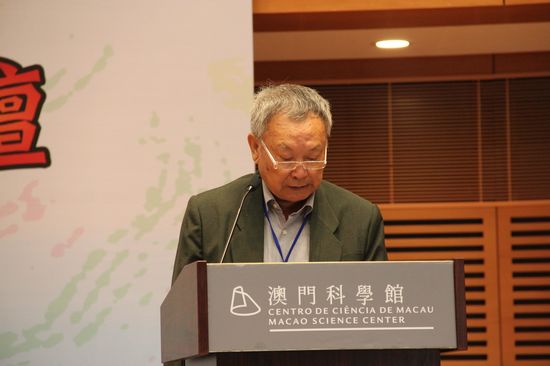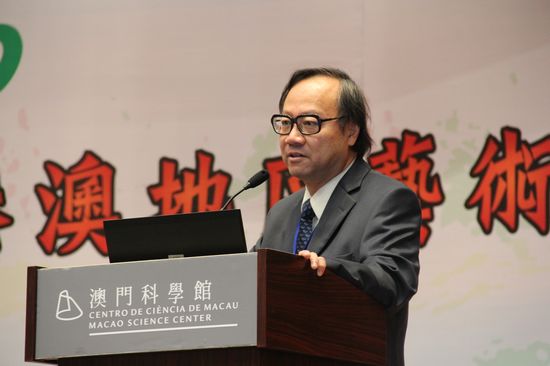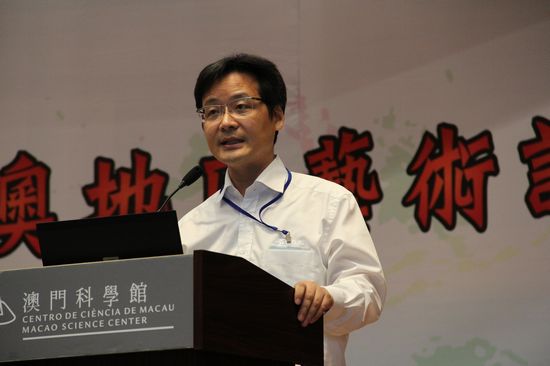
the forum

For those people living in different cultural contexts, their pursuit of respect and recognition for each other mainly depends on mutual understanding of their own cultures. As to the approach of understanding, some depend on accurate and lively language translation, and others on direct transmission of non-verbal cultural marks. Compared with complex writing languange system, those non-verbal cultural marks always function in trans-cultural communications with direct, vivid and comprehensible effect. As a result, more and more attention is paid. By non-verbal a painting with profound meaning, a melodious piece of music, a passionate dance, a humorous video or a building of great momentum, all of which will exert a specific mental impact on people of different races, nationalities, genders or beliefs. Sometimes, those non-verbal marks are more earnest and direct in cultural influences, and at least they share the same function of cultural transmission as writing language.
——Jia Leilei

In a position of an oriental artist, one can hardly find anything interesting when he or she observes a contemporary painting from Islamic cultural community in Middle East. Will people there have the same feeling that they fail to appreciate the wash painting by Confucius cultural community? International media has been monopolized by the West, and are we misled by such media? Are we baffled by western education to sing the western melody and dance to their rhythm? Do we also believe that contemporary painting is just western painting, international arts mean European and American arts, and the global village is a Christian church? Are we already deceived by the media in such a degree that we are unable to enjoy our excellent national tradition and the oriental wash painting of Confucius cultural community?
If the 21st century becomes an age of Chinese culture recognition, more and more foreign artists will pilgrim to China as their ancestor in China’s Han and Tang Dynasties. We must, first of all, establish our proper pride and self-confidence. As Chinese painting once took a lead for thousands of years, why not a second time? In the future, only the first-class artists in China are the first-class ones in the world.
——Liu Kuo-sung

In the 1980s and 1990s, against the background of China’s reform and opening up, political reform of Portuguese government, diplomatic relations establishment of China and Portugal and China-Portugal Joint Declaration, Macao witnessed economic growth, increase of urban population, social prosperity and stable life, all of which led to increasing demand for cultural and art demand. Besides putting on classic plays and those plays which were familiar and grew mature in performance condition in Macao, many theatres naturally diverted their attention to foreign theatre translation. More access to western theatre productions provided an opportunity for young theatre artists in Macao to learn more about foreign ideology and culture, experience the updated info of theatre trend, and obtain inspiration and reference from classics.
——Mok Fan-chong

To audience, art is beyond boundary. However, from the perspective of author, art is supposed to maintain its own look. After all, its look can involve elements from exotic culture and make a change. We shall not oppose everything foreign in order to establish Chinese characteristics. In porcelain, the potter in Ming and Qing Dynasties succeeded in manufacturing a new product full of Chinese styles through foreign materials. On the other hand, the blind faith in foreign things is really harmful to art development. We must create better works on the basis of Chinese art tradition. Globalization will accelerate the cultural exchange between China and West, facilitate the dissemination of Chinese arts and provide more opportunities for us to absorb foreign merits. Whether in the past, the present or the future, regardless of time and place, Chinese arts remains the same.
——Yeung Chun-tong

The four most representative cultural systems, namely Greek culture, Islamic culture, Indian culture and Chinese culture, have gathered in Macao and collided with each other in a natural way. After over four centuries’ integration, interaction and accretion, Macao, as a sanctuary of eastern and western cultures, has produced a unique mode of multi-element culture, which is leading the social development. As a witness of, Macao proves and.
In the history of over four centuries, Chinese people and Portuguese settlers jointly set up varied living neighborhoods in the historical district of Macao. Besides showcasing the Chinese and western art characters in architecture, those neighborhoods demonstrate the two peoples’ integration and respect of each other’s religions, cultures and living habits. The historical district of Macao has witnessed the collision and conversation between western and Chinese cultures, proved the openness and inclusion as the eternal vitality of Chinese culture, and exemplified the peaceful coexistence possibility of diverse cultures.
——Xu Xin

Southern civilization, originating from Jinsha River and Yangtze River, is commonly recognized as one of the two sources of Chinese civilization, but in China’s history, northern civilization originating from Yellow River has been always suppressing and weakening southern one. Thus, in aesthetics, the southern elegance remains unbalanced with the northern magnificence and fails to achieve a real prosperity as aesthetic approach. As to artistic practice, we lack a genuine reflection of southern aesthetics and are dominated and contained by the northern one. In this way, we can say that it is indeed a problem that the contradiction from the northern aesthetics does hinder the recognition of southern spirit and aesthetics. A Chinese painter must surmount various obstacles in mentality, technique, tradition and so on. We have to ponder how experimental arts to shake off shackles of northern tradition and get nutrition from southern counterpart.
——Ge Hongbing














